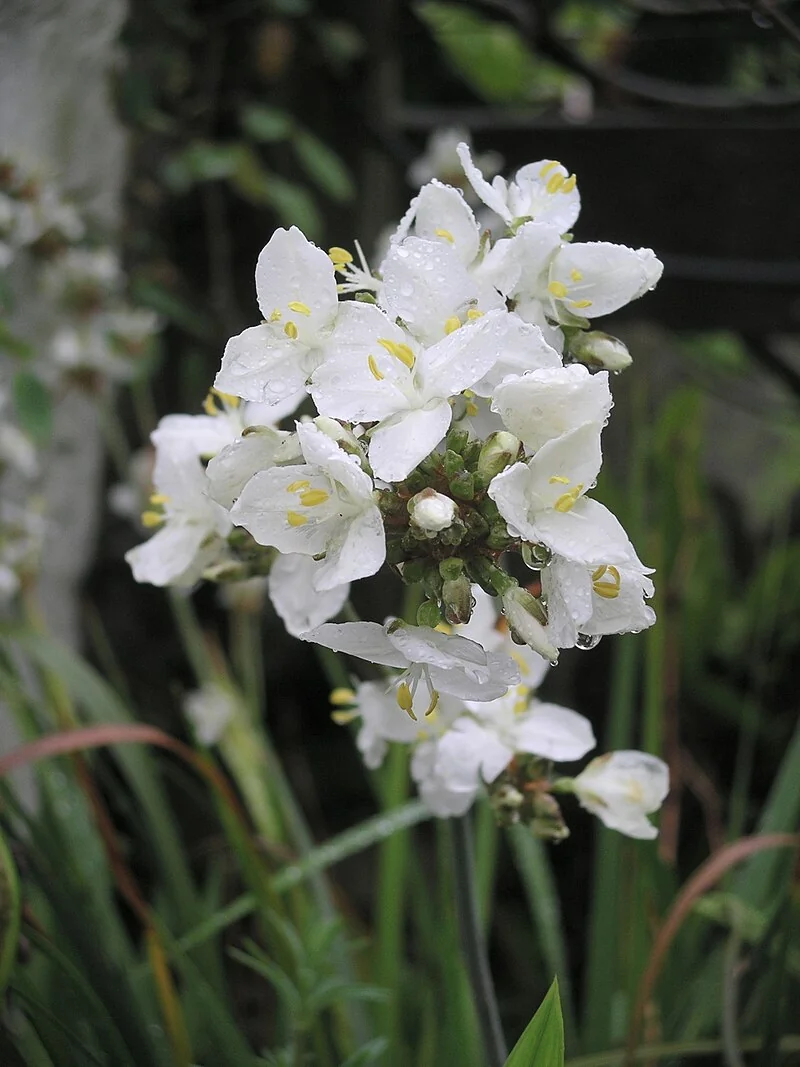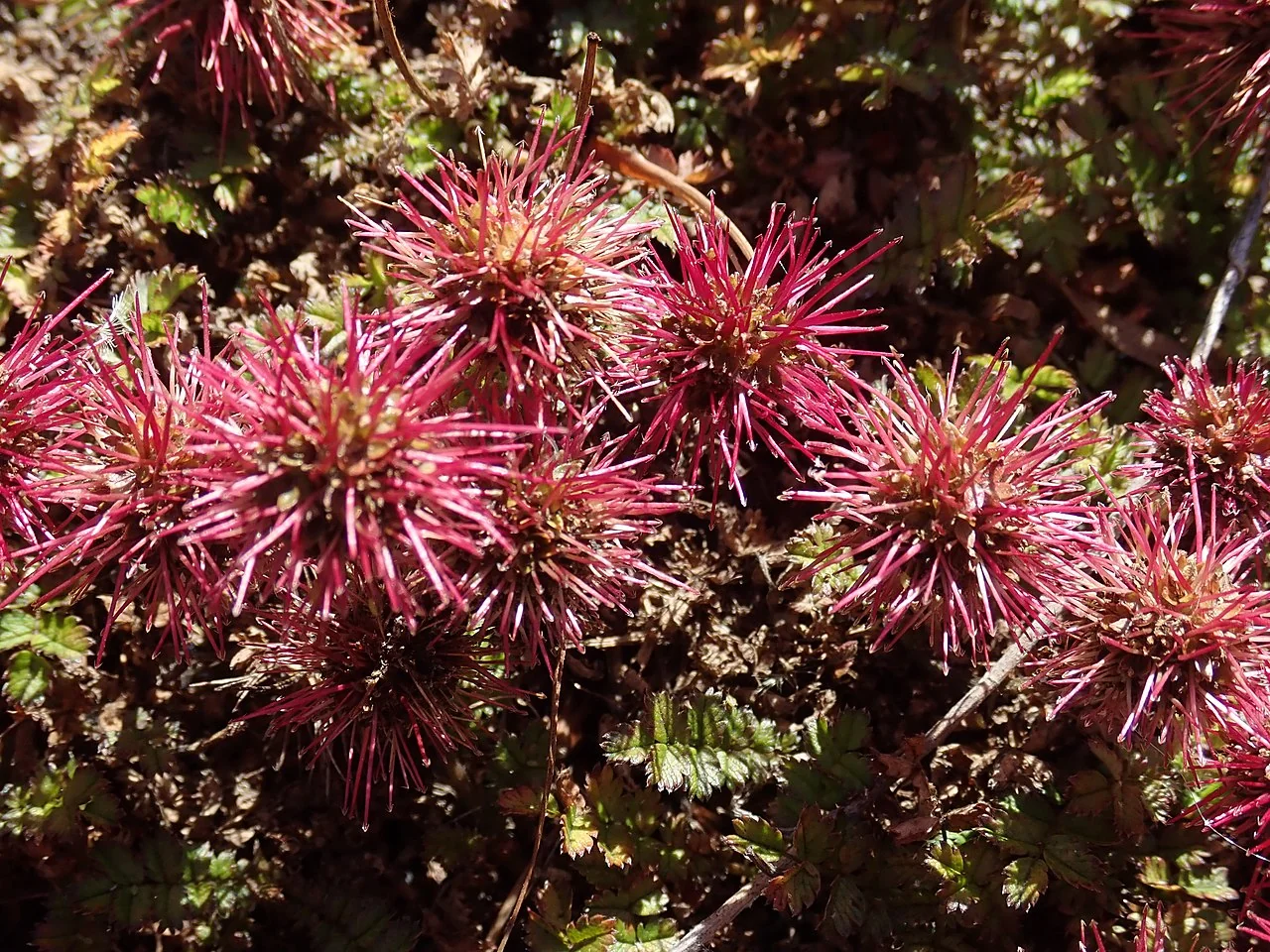
Yellow-Seeded NZ Iris
Libertia ixioides
Yellow-seeded New Zealand Iris, known as mīkoikoi in Māori, is the most widespread and adaptable of New Zealand's three native iris species, forming distinctive clumps of sword-like, yellowish-green leaves that often develop attractive striping and can reach 60cm tall and wide. This remarkably versatile endemic produces elegant white iris-like flowers up to 3cm diameter from spring to summer, followed by the species' distinctive bright tangerine-orange seeds contained in capsules that ripen from green through yellow to black. Found throughout all three main islands from coastal cliffs to montane forests and even as an epiphyte, it thrives in diverse habitats and has become a popular choice for gardeners seeking a hardy, drought-tolerant native that provides both attractive foliage and seasonal flowering interest. grasses .

Plant Description
Botanical Features
Yellow-seeded NZ Iris is a distinctive native plant with unique botanical characteristics that make it well-suited to New Zealand's diverse environments. This species exhibits typical features of its genus and family, with specialized adaptations that allow it to thrive in its natural habitat. The plant 's morphological features, including its leaf structure, growth habit, and reproductive characteristics, reflect millions of years of evolution in New Zealand's isolated environment. Understanding the botanical description of Yellow-seeded NZ Iris helps gardeners appreciate its unique characteristics and provides insight into its cultivation requirements and ecological role.
Quick Facts
Quick Facts Overview
| Scientific Name | Libertia Ixioides |
|---|---|
| Height | 0.5-0.6 meters (up to 1 m in ideal conditions) |
| Spread | 0.5-0.6 meters |
| Water Needs | Low to moderate (drought-tolerant once established) |
| Light | Full sun to partial shade |
| Frost Tolerance | Excellent (tolerates severe freezes) |
| Salt Tolerance | Good (grows on coastal cliffs) |
| Growth Rate | Moderate |
| Lifespan | Long-lived perennial |
Climate Best Suited to
Yellow-seeded New Zealand Iris is exceptionally adaptable, found throughout New Zealand from coastal to montane environments. It performs well in diverse climates and is one of the most climate-tolerant of all native plants.
Regional Suitability
| Whangārei | Ideal |
| Auckland | Ideal |
| Hamilton | Suitable |
| Rotorua | Suitable |
| Tauranga | Ideal |
| Gisborne | Ideal |
| New Plymouth | Ideal |
| Whanganui | Ideal |
| Palmerston North | Suitable |
| Napier | Ideal |
| Wellington | Ideal |
| Nelson | Ideal |
| Christchurch | Suitable |
| Dunedin | Suitable |
| Invercargill | Suitable |
| City | Climate Suitability |
|---|
Plant Habitat
Plant Habitat Overview
Occurs from coastal cliffs and dunes to rocky banks and forest edges across the main islands; tolerates wind and salt.
The genus Libertia occupies diverse habitats across New Zealand from coastal cliffs and riverbanks to montane forests and rocky outcrops, demonstrating remarkable ecological adaptability. They commonly grow in open situations on cliffs, along waterways, and in forest clearings, occasionally even establishing as epiphytes in suitable conditions. Their wide distribution from sea level to alpine zones reflects their tolerance for various environmental conditions and soil types.
Plant Conservation
Libertia ixioides , also known as mīkoikoi or New Zealand iris, is currently classified as "Not Threatened" under the New Zealand Threat Classification System, a status it has held since at least 2012. This perennial herb is endemic to New Zealand, found across the North, South, and Stewart Islands. It thrives in a variety of habitats, from coastal to montane regions, and is commonly observed on ridges, cliffs, gullies, river banks, and in upland forests. The plant is also noted for being easily propagated from fresh seed and through division, making it one of the most widely cultivated Libertia species in New Zealand.
Growing Requirements
Soil Requirements
Yellow-seeded New Zealand Iris is extremely adaptable:
- Well-draining soil preferred
- Tolerates wide range of soil types
- Thrives on coastal cliffs, ridges, and riverbanks
- Adapts to both poor and fertile soils
- Can even grow as an epiphyte on other plants
Light Requirements
Very flexible light needs:
- Full sun to partial shade
- Leaves often turn yellow/striped in full sun
- Excellent for coastal and exposed sites
- Thrives in forest margins and open woodland
Water Requirements
Low to moderate water needs:
- Drought-tolerant once established
- Adapts to various moisture conditions
- Suitable for water-wise landscaping
- Regular watering during establishment beneficial
- Tolerates both wet and dry periods
Planting Guide
When to Plant
The best time to plant Yellow-seeded New Zealand Iris is during spring or early autumn when temperatures are moderate and establishment is easier.
Site Selection
Choose a site with:
- Full sun to partial shade
- Well-draining soil (tolerates various soil types)
- Good air circulation
- Space for clump growth (50-60cm spread)
- Protection from waterlogging
Planting Procedure
- Space plants 40-50cm apart for mass plantings
- Dig a hole twice the width of the root ball
- Ensure adequate drainage
- Position the plant at the same level it was growing
- Backfill with existing soil (avoid rich amendments)
- Water moderately after planting
- Apply light organic mulch if desired
Initial Care
Water regularly during the first growing season to establish roots. Once established , this extremely hardy plant requires minimal care and demonstrates excellent drought tolerance.
Ecological Role
Environmental Impact
Stabilises light soils, offers nectar and pollen to native insects, and builds microhabitats through dense clumps.
Libertia species serve important ecological functions as food sources for pollinators through their attractive white flowers and provide habitat structure in diverse plant communities from coastal cliffs to forest margins. Their seeds are wind-dispersed, allowing natural colonization of suitable habitats, while the plants themselves create dense groundcover that helps prevent erosion. The nectar -rich flowers support various native insects, contributing to pollinator networks in both natural and restored ecosystems.
Uses Section
Uses Section Overview
This versatile native plant offers multiple practical applications in landscaping and garden design, from providing ground cover and erosion control to creating habitat for native wildlife. The plant 's natural characteristics make it valuable for restoration projects and sustainable gardening practices.
Cultural Significance
Libertia ixioides , also known as mīkoikoi or New Zealand iris, holds cultural significance primarily within New Zealand, where it is endemic.
Key Aspects of Cultural Significance Include:
- Māori Recognition: The plant is recognized by Māori with names such as mīkoikoi and tūkāuki, indicating its familiarity and presence in their traditional knowledge, even if not widely used for specific traditional purposes. Other Māori names recorded include mānga-a-huripapa and tūrutu.
- Living Heritage: It is considered part of the "living heritage of Aotearoa" (New Zealand).
- Eco-restoration and Landscaping: Today, Libertia ixioides is planted in eco-restoration projects, marae (Māori meeting grounds) gardens, and public landscapes, honoring its role in the natural ecosystem. Its use in these contexts helps to support native biodiversity and integrate native flora into modern environments.
- Symbolic Value: While not explicitly stated to have deep traditional uses, its presence and form were well-known, especially in coastal and forested areas. Its resilience and adaptability across various New Zealand environments, from coastal cliffs to inland forests, contribute to its status as a "native gem."
Landscaping Section
Landscaping Section Overview
Use as textural edging on sunny banks, rock gardens and coastal sites; pair with grasses and hebes.
This section provides important information about plant care and cultivation practices. Understanding these aspects helps ensure successful growth and development in garden conditions.
Seasonal Care Calendar
Spring
- Peak flowering begins with white iris-like flowers
- New growth emerges with fresh yellow-green coloration
- Best time for planting and establishment
- Remove any winter-damaged foliage
Summer
- Continued flowering through summer months
- Distinctive leaf colouring most pronounced in full sun
- Seed capsule development begins
- Demonstrates excellent drought tolerance
Autumn
- Capsules ripen from green through yellow to black
- Bright tangerine -orange seeds mature and disperse
- Natural seeding occurs in suitable sites
- Good time for seed collection
Winter
- Evergreen foliage provides year-round structure
- Excellent frost tolerance requiring no protection
- Maintains attractive form through winter
- Minimal care requirements
When to Prune and How Much
When to Prune and How Much Overview
Yellow-seeded New Zealand Iris requires minimal maintenance:
- Remove spent flower stems after blooming if desired
- Cut back old or damaged leaves at any time
- Leave seed capsules for bird food and natural seeding
- Generally best left unpruned to maintain natural clump form
- Division every 2-3 years can rejuvenate established clumps
The attractive foliage and colourful seed display are key features, so minimal intervention produces the best results.
How to Grow Yellow-Seeded NZ Iris
Yellow-seeded New Zealand Iris, also known as Mīkoikoi, is the most widespread and adaptable of New Zealand's native iris species. It forms distinctive clumps of sword-like, yellowish-green leaves and produces elegant white iris-like flowers. This remarkably versatile endemic thrives in diverse habitats and has become a popular choice for gardeners seeking a hardy, drought-tolerant native that provides both attractive foliage and seasonal flowering interest. Understanding its propagation methods is key to successfully growing this beautiful species.
From Seed
Propagating Yellow-seeded NZ Iris from fresh seed is a very effective method. Collect the bright tangerine-orange seeds from the black capsules when they are ripe, typically between December and April. Sow fresh seed immediately for best germination rates in a well-draining seed-raising mix. Keep the mix consistently moist during germination. Germination usually occurs within a few weeks to months. Once seedlings are large enough to handle, typically when they have developed a few true leaves, they can be transplanted into individual pots and grown in a sheltered location before planting out. Flowering typically occurs in the second or third year after sowing.
From Division
Division of established clumps is a straightforward and reliable method for propagating Yellow-seeded NZ Iris. This is best done in spring or early autumn. Carefully lift entire clumps to preserve the branched rhizomes. Split the clump into smaller sections, ensuring each section has a healthy portion of roots and growing points. Replant the divisions immediately into well-prepared soil that is well-draining and fertile. Water moderately after planting and maintain consistent moisture until established. Plants typically re-establish quickly within one season and will flower the following year.
Pests and Diseases
Exceptionally Hardy
- Natural Resilience: Very tough and resistant to most problems
- Wide Tolerance: Adapted to diverse and challenging conditions
- Low Maintenance: Rarely requires pest or disease management
Minor Potential Issues
- Crown Rot: Can occur in very poorly-drained or waterlogged soils
- Snail Damage: Young shoots occasionally damaged by snails or slugs
- Aphids: Minor infestations possible on new growth but rarely serious
Environmental Considerations
- Waterlogging: Most sensitive to permanently wet conditions
- Competition: May be overwhelmed by very aggressive weeds when young
- Establishment: Most vulnerable during initial establishment period
Management
Ensure adequate drainage and provide space for natural growth. This exceptionally hardy plant rarely develops serious problems when grown in appropriate conditions with minimal intervention required.
Bonus Tip
The New Zealand Iris
Despite its common name, the Yellow-seeded New Zealand Iris is not a true iris. While it belongs to the same family (Iridaceae) and its flowers bear a striking resemblance to those of true irises, it is a distinct genus endemic to New Zealand. Its scientific name, ixioides , even means 'like Ixia', referring to another genus in the iris family. This highlights the fascinating evolutionary paths taken by plants in New Zealand's isolated environment.







